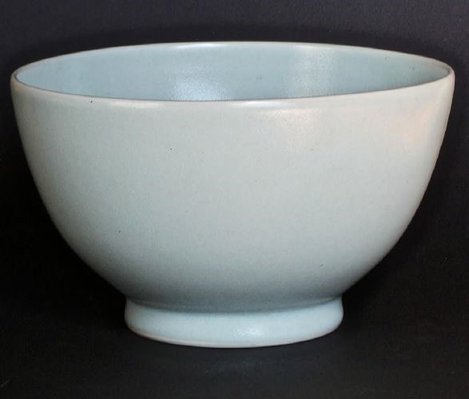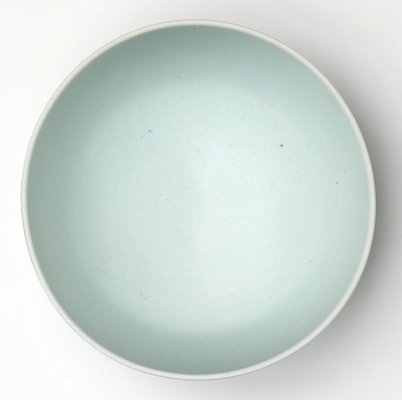

-
Details
- Date
- 2019
- Media category
- Ceramic
- Materials used
- natural sericite porcelain stone, Joadja stone, kangaroo bone ash glaze
- Dimensions
- 11.1 x 18.7 x 18.5 cm
- Credit
- Purchased with funds provided by the Vicki Grima Ceramics Fund and the Mollie Douglas Bequest 2020
- Location
- Not on display
- Accession number
- 101.2020
- Copyright
- © Steve Harrison
- Artist information
-
Steve Harrison
Works in the collection
- Share
-
-
About
Steve Harrison’s ceramics take simple forms - specifically bowls and cups as a vehicle through which to articulate concerns around ceramic history, the environment, and a way of life based upon trying to touch the ground lightly. His research into kiln and clay technology has led him to a simplification of production and sourcing of materials that strips ceramics back to its origins.
His important series of bowls known as '5 stones' are made from the five naturally occurring sources of porcelain in the world: Jingdezhen, China; Yanggu, Korea; Arita, Japan; Cornwall, UK and Mittagong, Australia. Harrison's investigations into these sources stretch over 15 years, from 2002 to 2017. He is interested in the origins of these porcelain sources, specifically centred around a rock called serecite, which is ground and processed into a clay body without additives. It is this sourcing and pressing, and the making of the work near the source which is of interest to Harrison. Workng on the idea of sustainability, works are made from a 50-kilometre-wide palette of materials, not only for clay and glaze materials such as local rocks, shales, gravels and ash, but also the wood that fires the kiln.
This bowl was made in Australia from stones Harrison collected in Bangsan from the gutter of the dirt road leading up to the ancient archaeological site. Harrison brought the stones back to Australia; crushed, ground and made the 100 per cent sericite porcelain body. The glaze is Joadja porcelain stone and kangaroo ash from a kangaroo that had died in Harrison’s backyard. He calcined the bones in his kiln and made this pale blue matt glaze. Harrison made only three of these bowls; two were donated to the Yanggu Porcelain Museum, Seoul, Korea.
-
Exhibition history
Shown in 1 exhibition
Open Studio (brick vase clay cup jug), Art Gallery of New South Wales, Sydney, 01 Jul 2023–07 Jan 2024




